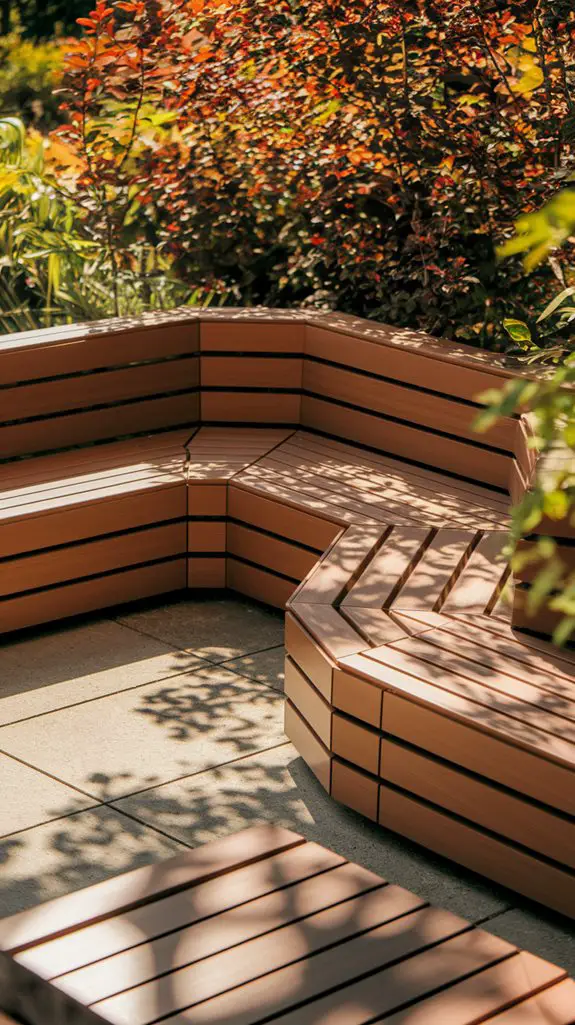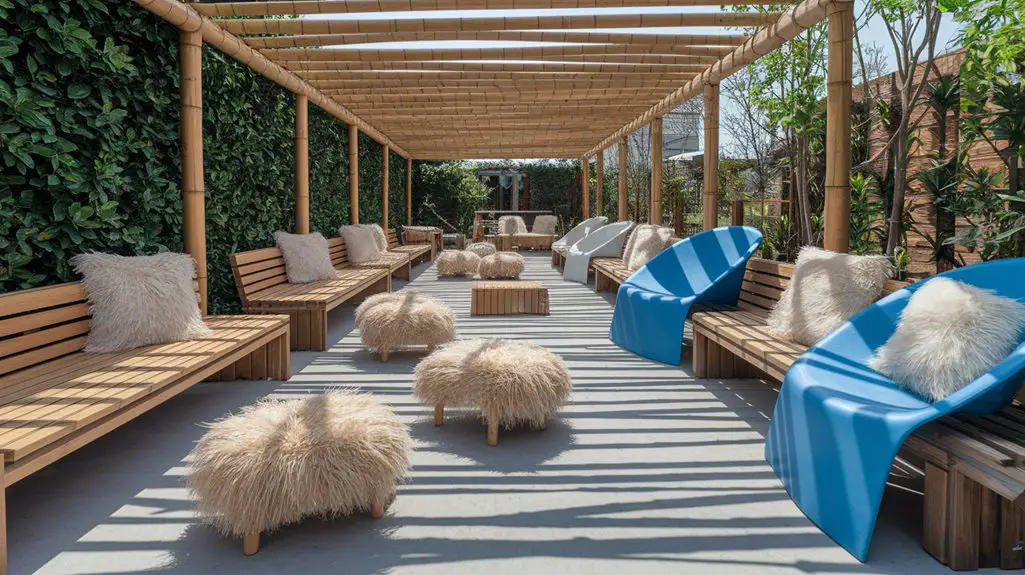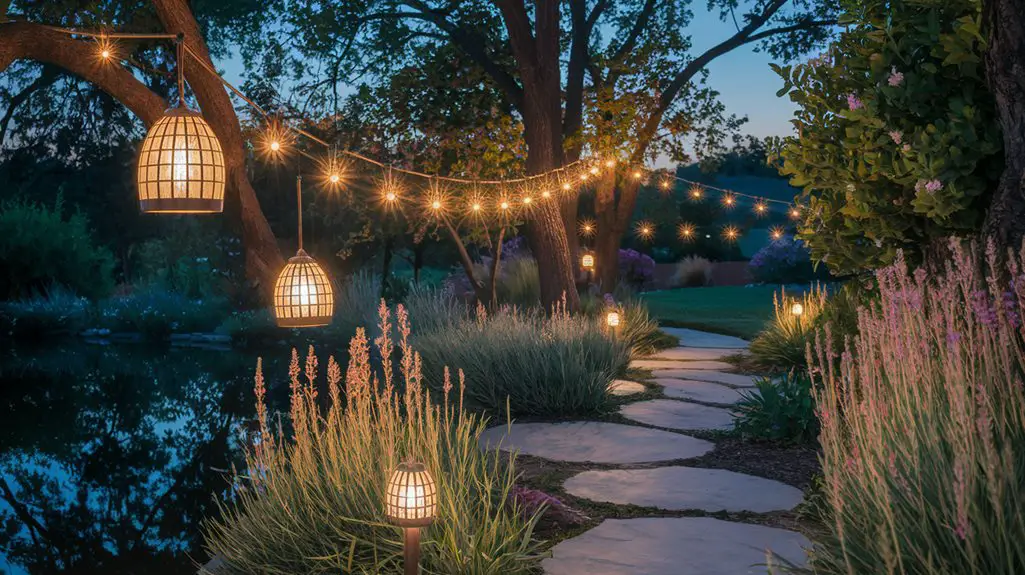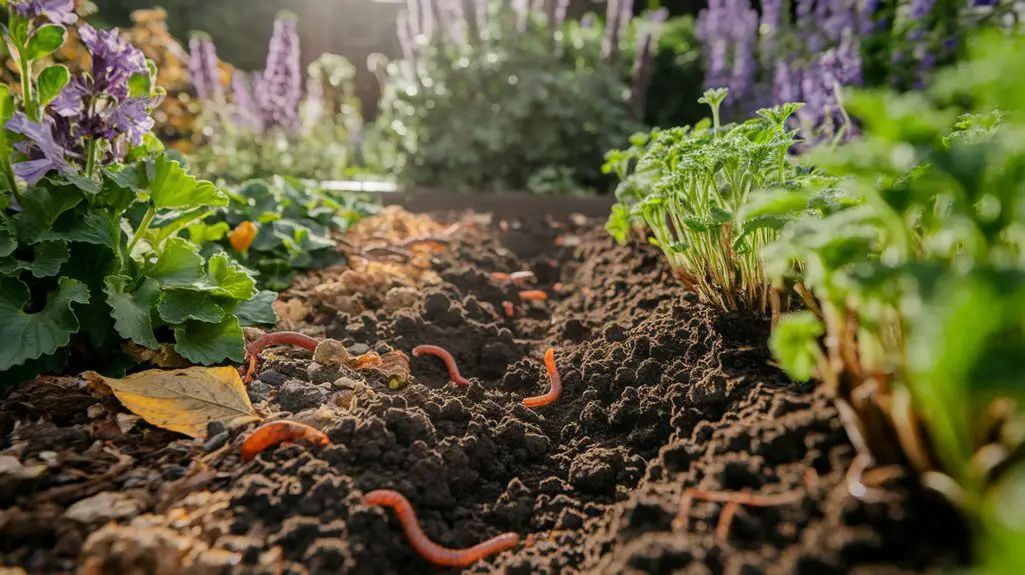Creating a beautiful outdoor space doesn’t need to cost the earth. You’ll find plenty of sustainable materials that can transform your patio or garden into an eco-friendly retreat. From reclaimed wood that tells a story to recycled plastics that withstand decades of weather, your choices matter. The right materials won’t just reduce your environmental footprint—they’ll also create distinctive, durable seating that stands up to the elements while standing out from cookie-cutter options.
Reclaimed Wood Options for Garden Benches and Chairs
Reclaimed wood stands as the perfect marriage of sustainability and style for your outdoor seating projects. By repurposing timber from old barns, factories, and docks, you’re giving new life to materials that might otherwise end up in landfills.
Look for weathered oak, pine, or redwood pieces that already possess natural resistance to outdoor elements.
You’ll find that reclaimed wood brings character impossible to replicate with new materials—each knot, grain pattern, and patina tells a story.
For DIY benches, salvaged railroad ties offer sturdy foundations, while wine barrel staves curve perfectly for unique chair backs.
Treat your reclaimed pieces with eco-friendly sealants to enhance their longevity without compromising their environmental benefits. Additionally, using eco-friendly options for your decking can further bolster your commitment to sustainability.
The result? Distinctive outdoor seating that demonstrates your commitment to planet-friendly living.
Recycled Plastic Lumber for Weather-Resistant Seating

Recycled plastic lumber represents the evolution of outdoor furniture materials, transforming waste into weather-resistant wonders for your garden or patio. Unlike wood, these innovative materials won’t rot, crack, or require annual staining—saving you time and resources while keeping plastics out of landfills. Additionally, sustainable building materials like recycled plastic lumber help reduce the demand for virgin resources, making them a smart choice for eco-conscious consumers.
| Feature | Recycled Plastic | Traditional Wood |
|---|---|---|
| Lifespan | 50+ years | 7-15 years |
| Maintenance | Minimal cleaning | Regular sealing/staining |
| Weather Resistance | Complete | Moderate to poor |
| Environmental Impact | Diverts waste | Depletes forests |
| Cost Efficiency | Higher upfront, lower lifetime | Lower upfront, higher lifetime |
You’ll find these durable materials in various colors and textures, many mimicking natural wood grain. Choose manufacturers that use post-consumer plastic waste for maximum environmental benefit. The investment pays for itself through decades of maintenance-free use.
Sustainably Harvested Bamboo Seating Solutions

While traditional hardwoods deplete forests over decades, bamboo emerges as the superstar of sustainable seating materials, reaching harvest maturity in just 3-5 years. This rapid growth cycle makes bamboo an eco-warrior in your outdoor space, consistently replenishing itself without taxing ecosystems.
You’ll find bamboo seating remarkably versatile—from minimalist benches to elaborate sectionals. When treated with natural oils or water-based sealants, bamboo withstands moisture and UV exposure admirably.
Look for FSC-certified bamboo products to guarantee your furniture comes from responsibly managed plantations. Additionally, incorporating reusable materials into your gatherings can further enhance your commitment to sustainability.
For maximum longevity, store bamboo pieces in covered areas during extreme weather or invest in furniture-specific covers. The material’s natural flexibility offers ergonomic comfort, while its distinctive grain patterns bring organic aesthetic appeal to any patio or garden setting.
Biodegradable and Compostable Outdoor Cushion Materials
As conventional outdoor cushions decompose in landfills for decades, innovative biodegradable alternatives now transform your seating experience with eco-friendly comfort.
You’ll find options made from organic cotton filled with kapok fiber or wool that naturally resist moisture while remaining fully compostable after their lifecycle.
Consider cushions crafted from hemp fabric—three times stronger than cotton—stuffed with buckwheat hulls that mold to your body.
Cork-filled options provide water-resistant durability while being completely biodegradable.
For rainy climates, look for PLA (polylactic acid) covers derived from corn starch that offer waterproof protection yet break down in industrial composting facilities.
When shopping, verify certifications like Cradle to Cradle or Global Organic Textile Standard to guarantee your cushions truly return to earth without harmful residues. Additionally, incorporating colorful outdoor cushions can enhance the aesthetic appeal of your space while being sustainable.
Upcycled Industrial Materials for Modern Outdoor Furniture
Industrial discards have found remarkable new life in contemporary outdoor furniture, transforming what would become landfill waste into striking centerpieces for your patio or garden. You’ll find these pieces offer unmatched character while greatly reducing your carbon footprint. Additionally, using renewable resources in your backyard landscaping can enhance the sustainability of your outdoor space.
| Material | Best Used For | Durability | Maintenance |
|---|---|---|---|
| Steel Pipes | Chairs, Table Frames | 15-20 years | Minimal, occasional rust check |
| Cable Spools | Coffee Tables, Ottomans | 10+ years | Seal annually if untreated |
| Shipping Pallets | Loungers, Benches | 5-7 years | Regular sealing against moisture |
| Concrete Cylinders | Stools, Side Tables | 25+ years | None, improves with age |
Consider your local industrial zones as hunting grounds for these materials—many businesses discard these items regularly and will gladly give them away, saving disposal costs while supporting your sustainable design project.
Natural Stone and Clay Seating Arrangements for Longevity
Natural stone and clay elements represent the ultimate sustainable choice for outdoor seating, often outlasting several generations of homeowners with minimal environmental impact.
You’ll find that locally-sourced flagstone benches, limestone blocks, and slate arrangements require virtually no maintenance while naturally complementing any landscape design.
Consider incorporating clay features like rammed earth benches or cob seating walls, which utilize the earth beneath your feet as building material.
These structures actually improve with age, developing character through seasons of use.
For maximum longevity, pair your stone seating with proper drainage and stable foundations.
A gabion bench—steel caging filled with local stones—offers an excellent hybrid solution that prevents erosion while providing comfortable, dry seating year-round.
These earth-friendly options won’t end up in landfills and will serve your outdoor space for decades. Additionally, using natural materials in your seating can significantly reduce your carbon footprint and promote a healthier environment.
Conclusion
You’re not just sitting on furniture; you’re perched on planet-saving thrones! While your neighbors coddle petroleum-based patio sets destined for landfills, you’ll smugly sip lemonade on your reclaimed barn door bench. Your upcycled tire ottoman will outlast their disposable lifestyle choices. Remember, in the grand comedy of consumption, you’re the enlightened character who’s discovered the punchline: sustainable seating isn’t just comfortable—it’s revolutionary.



